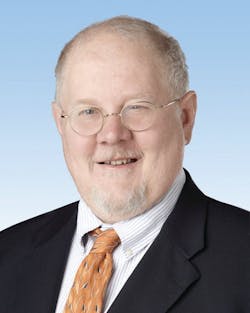Higher Temperatures Create Higher Stakes for Refrigerants
For many regions in the U.S., December traditionally goes hand in hand with pulling thick coats, gloves, and scarves out of storage—and pressing heating systems into months of heavy service. But today, these same regions are experiencing mild winter months. In fact, according to the National Oceanic and Atmospheric Administration, 2023 was the warmest year on record for North America, South America, and Africa, as well as the second warmest for Europe. For the lower 48 U.S. states, winter 2023 was the warmest in 130 years, with temperatures more than 5F (2.8 C) above average.
These days, even people in the Northeast U.S., can be comfortable outside in winter, wearing just jeans and a hoodie. Some households may even need to kick the air conditioning on in early December or early March. Needless to say, global warming is driving climate change and changes in the HVACR Industry. Over the past several years, contractors have been busy installing and servicing cooling systems in climate zones that historically haven’t needed them. As temperatures rise, refrigerants need to work harder to keep people comfortable and maintain proper temperatures for foods, beverages, and pharmaceuticals. And they must do so without contributing to global warming and other environmental concerns. Consider the following demands, which raise the stakes for refrigerant performance and sustainability.
Demand 1—Help Reduce Global Warming
When discussing refrigerants and climate change, a natural starting point is global warming potential (GWP). That’s why the focus these days is on A2Ls, which offer significantly lower GWP than legacy refrigerants. The “big three” in the A2L arena—R-454A, R-454B, and R-454C—are now being selected for new-generation equipment solutions in various HVACR applications. A look at GWP reduction in a sampling of these applications tells the story:
- R-454A (Chemours Opteon™ XL40) and R-454C (Opteon™ XL20) can provide a 94% to 96% reduction in GWP as an alternative to R-404A, while offering similar performance.
- Applications that historically would use a new R-410A unit can transition to R-454B (Chemours Opteon™ XL41), resulting in a 77% reduction in GWP.
Installations are already happening that represent milestones for A2Ls—in and beyond commercial refrigeration.
The industry is also choosing HFO-1234yf, which has a AR4 GWP of 4 and is used as a blend component in Chemours A1 and A2L products. Although A2Ls are for new equipment only, lower-GWP A1 refrigerant solutions can help in retrofits. For most applications using a higher-GWP HFC in an existing system, there’s likely a lower-GWP HFC/HFO blend for retrofit applications.
Demand 2—Balance Environmental Properties with Optimal Performance
The true innovation in refrigerant development lies in striking the optimal balance between environmental impact and performance for a diversity of applications. A2L refrigerants have been designed with the following important factors in mind, raising the bar in terms of performance and support for environmental priorities.
- Low GWP and zero ozone depletion potential (ODP)
- Reduced energy consumption
- Circularity—ability to be recovered, recycled, and reclaimed
- Lower operating costs over the lifetime of equipment
- Safety—for technicians and end users
- Overall performance—measured by capacity, reliability, and efficiency
- Can be serviced by a large existing workforce of trained technicians
- Responsible manufacturing focused on reducing carbon emissions
- Availability and supply chain strength
Demand 3—Solve for Climate Zone Challenges
ASHRAE divides the U.S. into eight major climate zones. These range from Zone 1, which is very hot, humid, and dry, to the subarctic Zone 8. Between these two extremes, we find various levels of heat/cold, humidity, and dryness. These climate zones provide system engineers with guidance for choosing the best designs—including refrigerant selection—so that each zone can be equipped with the appropriate system, optimized for year-round capacity, efficiency, reliability, and more. Here are a few scenarios to illustrate cooling and heating challenges in various climate zones:
- Tropical—High heat and humidity put heavy demand on cooling equipment, from air conditioners to refrigeration systems. These cooling systems are likely to run most of the year, so choosing a highly energy-efficient option is paramount.
- Hot, dry climates—Refrigerants need to work extremely hard and support systems that reduce issues like icing. In commercial applications, refrigerants must minimize large temperature swings.
- Colder ambient temperature zones—Cooling systems in these climates have limited use during the year, but they must perform reliably when needed.
- Climates where heating buildings is prioritized over cooling them—There is a transition from traditional AC-only units to new-generation heat pumps. Heat pumps must be properly sized to ensure occupant comfort and keep the heat pump from “struggling” to control humidity when operated in AC mode.
Installations are already happening that represent milestones for A2Ls—in and beyond commercial refrigeration. As climate change continues to “thaw out” winters and heat up summers, refrigerants will play an increasingly important role in keeping people and products cool and helping to reduce the impact that industry and society have on rising global temperatures. A2Ls are the foundation of the HVACR industry, offering a full toolbox of systems, components, and refrigerants that meet—in a highly efficient manner—the challenges of cooling and heating in various climate zones.
Charles “Dr. Chuck” Allgood holds a PhD in chemistry, has more than 30 years of experience in the HVACR industry, and is a respected speaker at many industry events.
About the Author
Charles Allgood
Technical Fellow with Chemours
Charles “Dr. Chuck” Allgood holds a PhD in chemistry, has more than 30 years of experience in the HVACR industry, and is a respected speaker at many industry events. In addition to Chemours, he’s worked for the National Institute of Standards and Technology. Dr. Allgood has held a variety of research, development, business, technical service, training, and applications development positions with Chemours. Most recently, he has focused on the development of low-GWP refrigerants—including Chemours Opteon™ brand refrigerants—and educating industry professionals about the changing regulatory landscape and A2L refrigerants on the market.

